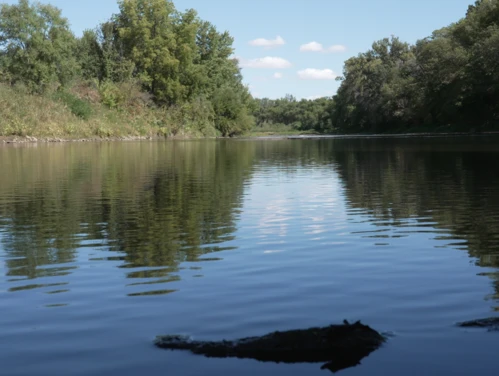DES MOINES – Drought conditions improved slightly across much of the state due to above-normal precipitation totals in June, according to the latest Water Summary Update.
Despite receiving below-normal precipitation at the beginning of the month, increased rainfall at the end of June helped ease drought and abnormally dry conditions across the state. For the month of June, statewide precipitation totaled 5.89 inches, or 0.63 inches above-normal. The state also experienced warmer weather, with statewide temperatures averaging 72.2 degrees, 2.3 degrees above-normal.
According to Iowa’s Drought Plan, dry conditions improved for much of the state. Some areas of western and southern Iowa continue under a drought watch due to larger precipitation deficits. In the other drought regions, conditions remain stable, with normal drought designations. According to the U.S. Drought Monitor (USDM), more than 40 percent of Iowa continues to experience abnormally dry conditions or drought conditions.
The National Weather Service’s Climate Prediction Center’s July outlook indicates an equal chance for above, below, or near-average precipitation across much of the state. However, southwestern Iowa has a higher chance of seeing below-normal precipitation. July will also likely see above-normal temperatures across the entire state. Warmer air holds more moisture and could increase concerns for widespread drought if the state experiences below-normal rainfall during July.
“Due to above-normal precipitation in June, especially rain events at the end of the month and into early July, drought and abnormally dry conditions improved across much of Iowa. However, longer-term moisture deficits mean Western and Southern Iowa are under a drought watch. The latest seasonal outlooks indicate potential for drought removal in those areas of the state, though southwestern Iowa has a higher chance of less rain in July,” said Jessica Reese McIntyre, DNR Environmental Specialist.
For a thorough review of Iowa’s water resource trends, visit
www.iowadnr.gov/watersummaryupdate.
The report is prepared by technical staff from Iowa DNR, the Iowa Department of Agriculture and Land Stewardship, IIHR—Hydroscience and Engineering, and the U.S. Geological Survey, in collaboration with Iowa Homeland Security and Emergency Management Department.
